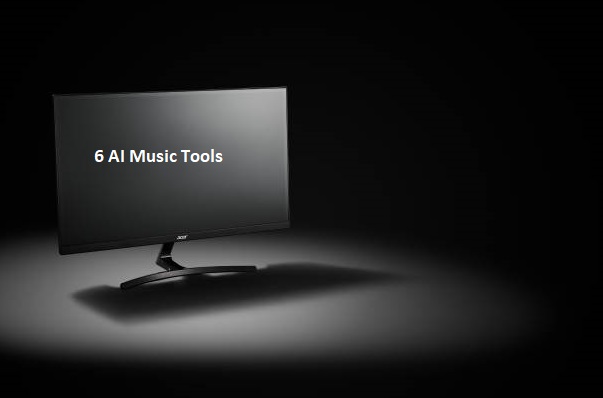In today’s music landscape, artificial intelligence is no longer a novelty; it’s a creative partner. From songwriting and beat-making to mastering and video production, AI tools are helping both emerging artists and seasoned producers craft smash hits faster, smarter, and often in unexpected ways. In this listicle, we’ll explore six AI music tools that are pushing boundaries in 2025, starting with Invideo, a platform that’s redefining the way music meets visuals.
1. Invideo
When discussing the convergence of music, visuals, and AI, Invideo deserves to be at the top of the list. This platform goes beyond being a standard video editor: it offers features tailored for creators who want to blend music and motion effortlessly. As a powerful ai music video generator, Invideo lets you input text prompts, select audio tracks, and automatically synchronizes scenes, transitions, voiceovers, and effects. Whether you’re launching a lyric video, visualizer clip, or music promo, the tool aims to reduce the friction between musical ideas and visual realization.
In addition to its web interface, Invideo also offers a free ai video app for mobile creation and on-the-go editing. The app supports features like script-to-video, voiceovers in multiple languages, AI avatars, and textual editing via “Magic Box” commands. With this flexibility, musicians and content creators can turn raw song ideas or rough audio demos into shareable visual clips, even from their phones. The free tier lets you generate up to 10 minutes weekly, with certain limitations (like watermarks) in place.
2. Suno AI
Suno AI is a generative music platform that allows creators to type in prompts and generate full songs, vocals, instrumentation, and arrangement included. What makes it compelling is its capacity for realistic music creation from text input, effectively shrinking the gap between concept and composition.
Because it can produce finished audio tracks with minimal manual instrumentation, artists are using Suno AI for everything from demos to idea generation. It’s especially useful for sketching out chord progressions or melodic hooks quickly before refining them in a DAW.
3. AIVA
AIVA (Artificial Intelligence Virtual Artist) is one of the more established AI composers, specializing in orchestral, classical, cinematic, and ambient music. You can experiment with styles, control instrumentation, and produce stems you can export to DAWs. Musicians often use it to generate backing tracks or score-like textures that can be layered under vocals or beats.
AIVA’s strength lies in structured composition: it can produce tension release arcs, harmonic progressions, and thematic variation in ways that mimic human compositional logic.
4. Amper Music / Amper AI
Amper is a user-friendly, cloud-based music creation tool that lets creators build adaptive, royalty-free tracks with control over mood, tempo, instrumentation, and more. You can tweak specific elements (e.g., drums, bass, keys) and export stems for further refinement. Its approach allows creators to “compose” without deep knowledge of music theory or sound design, ideal for content creators who need quick, polished backing tracks.
5. Boomy
Boomy markets itself as “make a song in seconds” and is built for accessibility. You choose a genre or style, provide a prompt or mood description, and Boomy generates a track you can edit or iterate on. It also offers distribution to streaming platforms (Spotify, Apple Music) and revenue share models. For many independent musicians, Boomy becomes a tool to rapidly prototype and test whether a musical idea resonates with listeners.
6. LANDR (AI Mastering / Creative Tools)
Though initially known as an AI mastering service, LANDR has expanded into offering additional creative AI features, loop tools, sample suggestions, and even limited composition tools. Its mastering engine is widely used by indie producers because it can deliver near-professional clarity with just a click. By combining composition, sampling, and mastering capabilities, LANDR positions itself not just as a finishing tool but as part of the creative lineup.
Why These Tools Are Redefining Hit-Making
Speed & Iteration
One of the greatest advantages of AI tools is speed. Ideas that once required hours of arrangement, mixing, and drafting can now be sketched in minutes. This enables artists to test many more ideas, follow up on “the spark” before it fades, and discard or refine weak ideas early.
Democratization of High-end Tools
Historically, orchestration, vocal arrangement, or cinematic scoring required specialized knowledge and expensive software. AI tools collapse such barriers now; even bedroom producers can access orchestral templates (via AIVA), vocal textures (via Suno), or mastering (via LANDR).
Co-creation and Hybrid Workflows
Rather than replacing human creativity, many artists use these tools as co-creators. For instance, one might generate a skeleton track using Suno or AIVA, then bring it into a DAW to add personal touches, polish the mix, and inject human dynamics. Visual tools like Invideo let musicians dovetail their musical ideas with dynamic visuals, leading to more immersive content.
Tips for Using AI Music Tools Wisely
- Use AI as a sketch tool, not the final product (unless intentionally so). Let AI lay the foundation; you bring the final emotional detail.
- Export stems early. Whenever possible, separate instruments and textures into stems when exporting. This gives you more flexibility for mixing and mastering later.
- Stay aware of licensing, training data, and transparency. As AI-generated works proliferate, questions around copyright, dataset sources, and attribution are active debates.
- Combine multiple tools in a chain. For example: generate a melody with Suno → arrange with AIVA → export to DAW → master with LANDR → build visuals with Invideo.
- Preserve your identity. Use AI-generated material as scaffolding, but always inject your own signature: unique phrasing, human imperfection, and creative decision-making.
Conclusion
AI is no longer the future of music; it’s the co-pilot in the studio. With tools like Invideo bridging sound and vision, and others like Suno, AIVA, and Boomy pushing compositional boundaries, the act of making hits is evolving fast. These six tools are not just gimmicks; they reflect a new paradigm in which musical ideas move from mind to audience more rapidly, flexibly, and collaboratively than ever before.



